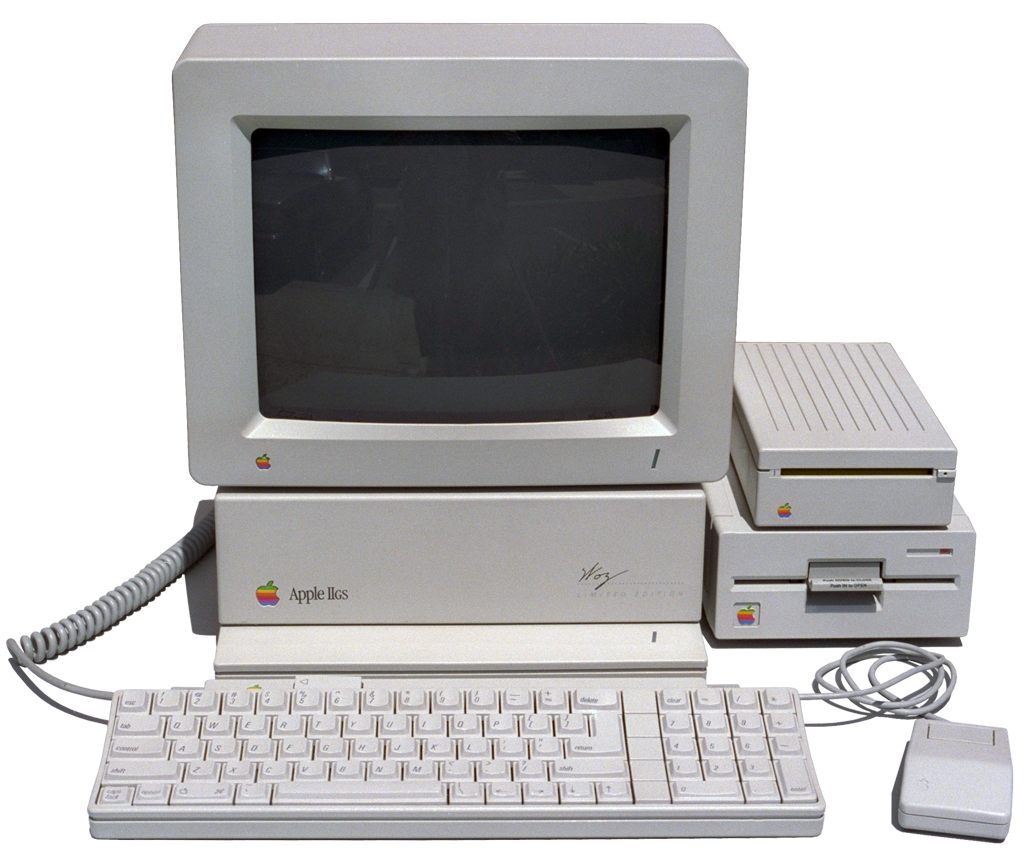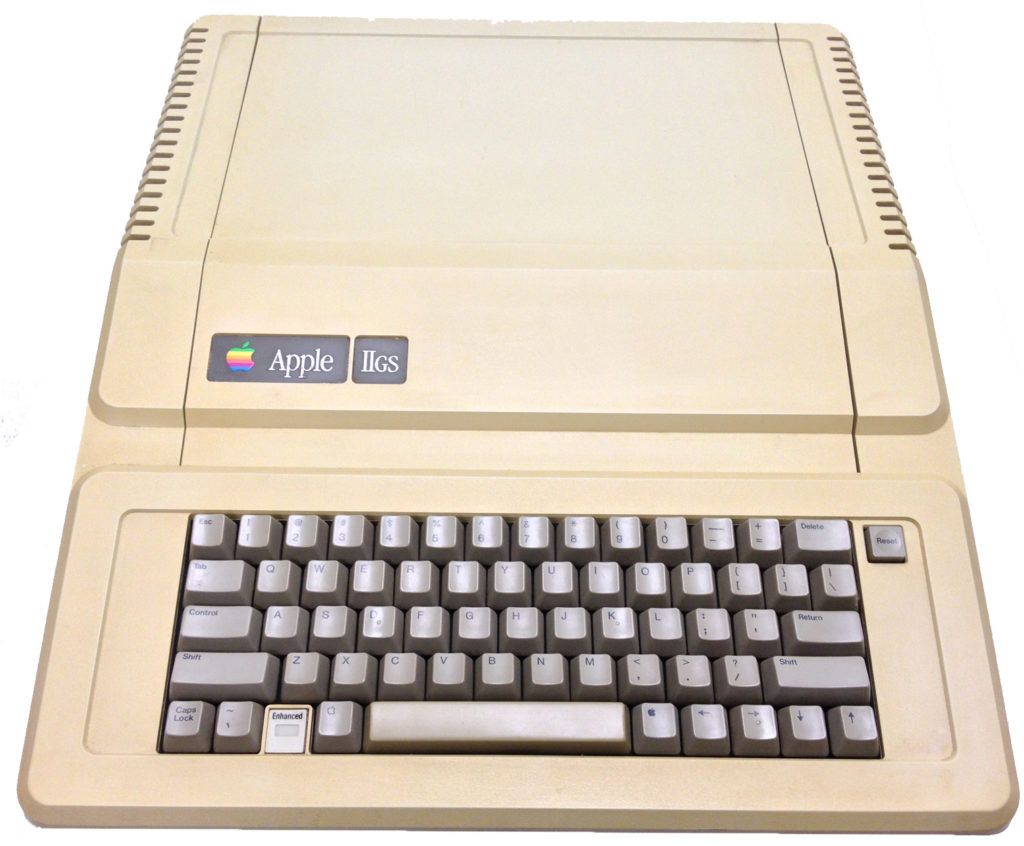Bit-ter Than Ever
In January 1985, Apple was investigating a new 16-bit CPU called the 65816. At that time, rumors spread about Steve Wozniak putting
together a computer codenamed Apple IIx with 1 MB of RAM and more sophisticated graphics and sound. They struggled to include
certain coprocessors in the system in order for it to emulate other computers, so the IIx project was cancelled. In its place,
another project was started, with the intent of emulating an Apple II and offering more features as a new machine. It went under
various codenames such as Phoenix, Rambo, Gumby, and Cortland. Some features from the ill-fated Apple III were implemented into the
new computer such as colored ASCII text and dual-speed arrow keys. That machine would eventually be released as the Apple IIgs on
September 15, 1986. Apple claimed it was 95% compatible with Apple II software, a strong point of the computer.

Apple II "Super-enhanced"?
Alongside the IIgs itself, Apple offered owners of the 8-bit IIe a kit to upgrade the computer to the IIgs' standards. They would
simply take the IIe to an Apple dealership and have its motherboard and metal tray under it replaced with the IIgs motherboard and
metal tray. This also applied to the labels, although the actual IIgs logo was changed slightly to fit where the IIe badge was.
When all was said and done, that left the keyboard, speaker, and power supply. Overall, the upgrade cost the trade-in value of the
IIe board plus $500. There were two downsides to the upgrade: first, no mouse was included and the keyboard had no keypad, so it
couldn't handle all input exactly like the IIgs did with its Apple Desktop Bus keyboard and mouse; second, some peripheral or
controller cards the IIgs could use didn't fit in the slanted case of the IIe. All in all, people didn't deem the upgrade worth it
when they bought a 3½" drive, RGB monitor, and mouse separately, thereby not saving much money.



